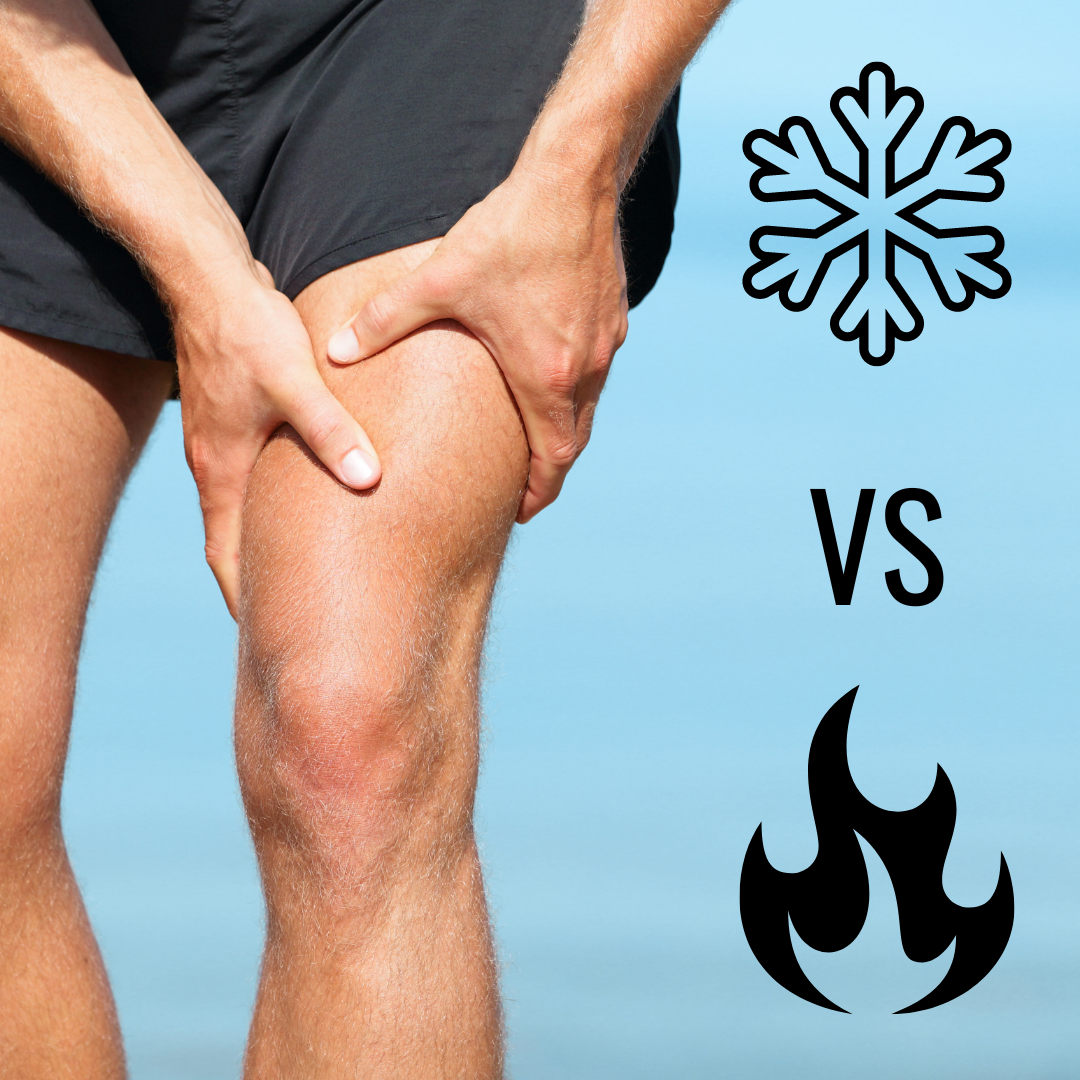Almost all of us, at some point, will strain or irritate a muscle or ligament. The resulting pain can have a big impact on your daily life.
To ease that pain, is it better to use ice or heat?
What is Inflammation?
Inflammation and pain is the body’s natural reaction to an injury. As much as it might hurt, swollen and inflamed tissue contains the components of healing that your body uses to repair itself after an injury.
When an area on your body is inflamed, fluid (“water on a joint”) and/or irritation cause pressure in the area. It’s this pressure that causes you to feel pain. A good example is an ankle sprain. The ankle swells when it’s sprained because the body sends inflammation and increased fluid to the wounded area. Inflammation can also result from irritation in an area of the body’s tissue, such as a hangnail. Depending on the nature and severity of the injury, in orthopedics, inflammation is treated using anti-inflammatory medication, elevation of injury, massage, cortisone injections, compression and rest.
Does Heat Make Inflammation Worse?
Ice (cryotherapy) beats heat (thermotherapy) for treating pain and inflammation in most circumstances. Although heat initially feels warm and cozy, ice helps decrease pain and inflammation in the long run.
Applying Ice
Ice constricts, or narrows, blood vessels. Constricting blood vessels inhibits the body from allowing inflammation in the iced area. Heat dilates, or widens blood vessels, allowing more inflammation to flow to an injured or painful area.
As a general rule of thumb, ice should be used if you have recently injured an area or had surgery or a procedure. Medical studies agree that 20 minutes of icing is most effective. You should ice with a cold compress or ice pack that is the temperature of a melting ice cube. Some people have cold allergies, which cause ice to burn the skin. Put at least a thin towel between the ice and skin to avoid burned skin. Greater than 20 minutes of icing can cause reactive vasodilation, or widening, of the vessels as the body tries to make sure the tissues get the blood supply they need. Studies have also shown 30 to 40 minutes in between icing sessions are needed to counter this reaction. The suggested time for icing is 20 minutes on and at least 30 minutes off.
Although many articles and studies may say that heat should be used for injuries and pain that have lingered for longer than six weeks, this is not necessarily the case. For conditions such as chronic tendonitis and osteoarthritis, the body thinks that it can heal the worn or injured area. The body continues to go through a cycle of increased inflammation even though it cannot heal these conditions on its own. Icing for 20 minutes several times a day can work as well as, if not better than, oral medications and injections. By controlling inflammation, symptoms often resolve or improve and pain subsides.
Applying Heat
Heat does have its role. Heat works best in larger muscle groups. As an example, heat helps to ease back muscle spasms – as long as the spasms are not caused by a new fall or injury. Moist heat or heat pads work best when used for 15 minutes on at a time and at least 30 minutes off.
RULES TO REMEMBER:
- If an injury has occurred to any body part within three days, ice is preferred, 20 minutes on and 30 to 40 minutes off.
- Pain to the back, neck and large muscle groups like quads, hamstrings and calves will respond well to heat after three days of injury.
- Use ice for pain in joints such as knees, elbows and shoulders.
Keep it Local
Do not apply ice or heat to large areas of the body if only one joint or body part is the focus. As an example, a full-body ice bath should not be used to treat an ankle sprain.
As a more advanced treatment, use ice AND heat. To achieve therapeutic results, you must do this in a very specific way. The key is to ice for 20 minutes, causing the vessels to narrow, and then heat for 15 minutes, causing the vessels to dilate. This acts as a pumping mechanism to the inflammation, pushing it away from the injured area.
Most importantly, end the treatment cycle on ice (unless you’re treating a chronic back spasm). By ending on ice, the vessels will be narrowed and will help keep inflammation from re-entering the area.
Heat and ice can be used on all injuries or sore body parts at any time and can provide significant pain relief.
Ice is definitely not as comfortable as heat, and ice will sometimes ache or burn for the first five to seven minutes of the 20-minute session. If used appropriately, it can help tremendously with most aches and pains.
I always like to say, “An icing a day keeps the orthopedic doctor away.”
Kristy Wheeler, PA-C is a Physician Assistant at the OrthoCarolina Hand Center



